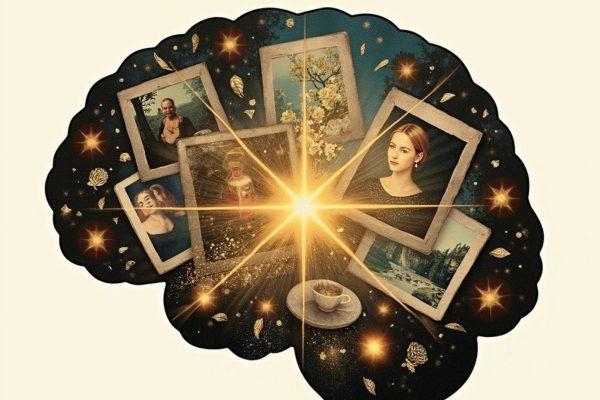One of my favorite things to do after a long day of work is to sit down to dinner with a good book. And on days when I’m not working, I love the freedom of reading whenever I want.
Needless to say, I’m an avid reader, especially fiction. But there is an interesting thing that happens when a person reads fiction.
Reading sends you off into a world of fantasy. It introduces new concepts and ideas, and let’s your imagination run wild as you try to guess where each twist and turn will take you. Not only that, but you have to learn about an entire cast of characters.
Each event has to be committed to memory. Something as simple as a man who scratches his head every time he appears in the storyline could be the crucial clue, and you don’t want to miss it!
Well, it turns out that all of this mental activity you engage in while reading helps preserve brain health and stave off symptoms of Alzheimer’s.
In fact, a study published in the American Academy of Neurology’s journal, Neurology, found that activities like reading, visiting libraries, and writing letters slow the rate of memory decline.
In older adults, frequent mental activity later in life was associated with a 32% slower rate of mental decline compared to those with an average level of mental activity. On the flip side, people who rarely engaged in these activities experienced a 48% faster decline!
And this isn’t just a one-off study. Many studies have shown that even if you start reading and writing later in life, you can still protect your brain.
But there are other things that can help too.
🎨Use Art to Challenge Your Brain
Visual art therapy, or simply viewing art, is often used to help improve cognitive function in people with mild cognitive decline or dementia. But it can also be useful when it comes to preventing memory problems to start with.
The key is to actually analyze and think about the art. Take a close look at it and see what you notice. Then, turn away from it and try to remember everything you observed. Try and be very detailed. For example, maybe you viewed a painting and saw the sky. Was it a sunny sky? A cloudy sky? A nighttime sky?
Perhaps there was a girl in the image. What color was her hair and clothing? Was she wearing a dress; or a blouse and with a skirt, pants or shorts? Was she smiling? Laughing? Serious? Sad? Thoughtful?
After you’ve taken inventory of your memory, look at the artwork again. What did you miss?
You can do this anywhere. Walking down the street? Take note of shop signs, colors, and people. Driving? Memorize billboards or landmarks. Test yourself the next time you pass by.
Some people even play games with license plates. For example, if you see I32-IQZ, you might translate it into “IQ is 132.” Or if you see O95-LKE, you might think “95 likes.”
It’s a fun and playful way to sharpen your memory—and it’s oddly satisfying when, a few days later, you happen to spot a license plate you previously “translated!”
🔒Trouble Remembering Names? Try Mental “Implants.”
One time my father went to some kind of memory conference, just for the heck of it. The speaker was introduced to hundreds of attendees. And a few hours later, he still remembered my father’s name.
What the speaker did was use mental “implants” to remember names. It is surprisingly effective, because the brain remembers images, music and memories better than it remembers words. (Isn’t it amazing how you can hear a song from years and years ago, and suddenly remember every word of it?!)
For instance, there are a lot of ways you can remember the name “Shelly.” She can be a tiny seashell on the beach, or the giant scallop shell depicted on the Shell gas station sign.
Change the letters just a little bit to the name “Shelby,” and she or he is a vintage Shelby Mustang.
And while I’m no rock star, you might associate my first name with something as exciting as the old song Space Oddity, by David Bowie.
It’s an amazingly simple trick. Plus, if you keep repeating the name over and over again in your head, it is more likely to be readily available to you later.
🧠Your Daily Habits Matter
Eating a healthy diet, staying active, and keeping stress in check all play a role in brain health. But daily mental activities—reading, writing, memorizing, and playing word or visualization games—are equally powerful.
So pick up that fantastical book. Spend an afternoon at the museum. Challenge yourself with mental games and puzzles.
Your brain will thank you for it.
SOURCES:
Wilson RS, Boyle PA, Yu L, Barnes LL, Schneider JA, Bennett DA. Life-span cognitive activity, neuropathologic burden, and cognitive aging. Neurology. 2013 Jul 23;81(4):314-21.
Chang YH, Wu IC, Hsiung CA. Reading activity prevents long-term decline in cognitive function in older people: evidence from a 14-year longitudinal study. Int Psychogeriatr. 2021 Jan;33(1):63-74.
Stine-Morrow EAL, McCall GS, Manavbasi I, Ng S, Llano DA, Barbey AK. The Effects of Sustained Literacy Engagement on Cognition and Sentence Processing Among Older Adults. Front Psychol. 2022 Jul 11;13:923795.
Hughes TF, Chang CC, Vander Bilt J, Ganguli M. Engagement in reading and hobbies and risk of incident dementia: the MoVIES project. Am J Alzheimers Dis Other Demen. 2010 Aug;25(5):432-8.
Masika GM, Yu DSF, Li PWC. Visual art therapy as a treatment option for cognitive decline among older adults. A systematic review and meta-analysis. J Adv Nurs. 2020 Aug;76(8):1892-1910.
Lee R, Wong J, Lit Shoon W, Gandhi M, Lei F, et al. Art therapy for the prevention of cognitive decline. Arts Psychother. 2019;64:20-25.



